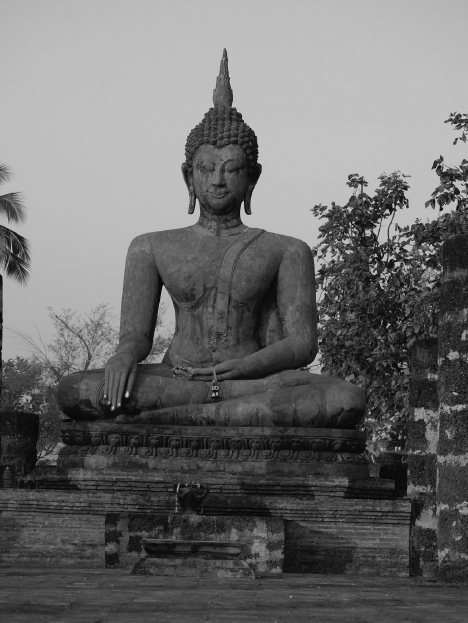Prologue
THE WORLD WE LIVE IN is very different from the world at the Buddha’s time, yet we human beings have the same afflictions and still experience physical and mental suffering. While the truth of the Buddha’s teachings transcends historical eras, the way they are presented to practitioners in a given time is influenced by the specific culture, environment, and economic and political challenges. I encourage us to become twenty-first-century Buddhists — people whose view is rooted in the Buddha’s message of compassion and wisdom and who also have a broad understanding of many fields, such as science — especially neurology, psychology, and physics — and other religions.
Our Buddhist knowledge must be expansive, not limited to just one topic, practice, or Buddhist tradition. We should try to learn about the teachings and practices of other Buddhist traditions and understand how they suit the particular dispositions and interests of the people who practice them. We may also include some of these teachings in our own practice. In this way, we will better appreciate the Buddha’s skill as a teacher, which will reduce the sectarianism that limits us Buddhists from acting together to contribute to the welfare of all peoples and environments on our planet. We should also understand the full path to awakening and how different teachings can be practiced by the same individual at different points of his or her spiritual journey. This will clarify our personal practice as well as increase our respect for all Buddhist traditions and other religions.
To grow these understandings in ourselves, reciting prayers and mantras is not sufficient. While perhaps increasing our devotion, these activities alone do not bring wisdom. In the modern world, we need to be realistic and practical, and for this, knowledge is essential. All of us want happiness, not suffering. Since both happiness and suffering arise in dependence on causes and conditions, we must know the causes of each so that we can train our minds to create the causes for happiness and abandon the causes for suffering.
All of us want a harmonious society. Since society consists of individuals, to bring about peace each individual must cultivate peace in his or her own heart and mind. Of course the ultimate aim of the Buddha’s teachings goes beyond world peace to liberation from all rebirth in cyclic existence (saṃsāra), but the teachings can help us to create a more peaceful society while we are still in cyclic existence.
The material in this series accords with the general presentation of the Indian sages of the Nālandā tradition, who are held in esteem by all four Buddhist traditions in Tibet as well as Buddhist traditions in China. Most of the quoted passages come from these Indian sources, and in terms of the method aspect of the path — renunciation, bodhicitta, and the perfections of generosity, ethical conduct, fortitude, joyous effort, and meditative stability — there is little difference among them. Tibetan traditions follow Nāgārjuna and speak of the noncontradictory nature of emptiness and dependent arising as the essence of the wisdom aspect of the path, here we will emphasize Tsongkhapa’s presentation of emptiness and sometimes mention teachings from the Nyingma, Kagyu, and Sakya traditions. Because the Pāli tradition emphasizes the Fundamental Vehicle which is common to all Buddhist traditions, we also cite passages from it.
In general, my teaching style does not follow the approach of the traditional lamrim (stages of the path) teachings. I like to speak a lot about emptiness and show its relationship to other aspects of the path; this way of presenting the teachings also flourished in ancient India. Many years ago, His Eminence Geshe Lungrik Namgyal, the Gaden Tripa at that time, said to his friends, “Understanding His Holiness the Dalai Lama’s teachings is challenging because his way of presenting the material is special. He touches on this point and that, but we are unable to integrate everything into the traditional framework of the teachings.” I wonder if this is praise or criticism. In any case, please think deeply about the various topics in the manner explained. Contemplate how these topics relate to one another and to your life.
Bhikṣu Tenzin Gyatso, the Fourteenth Dalai Lama
Thekchen Choling
